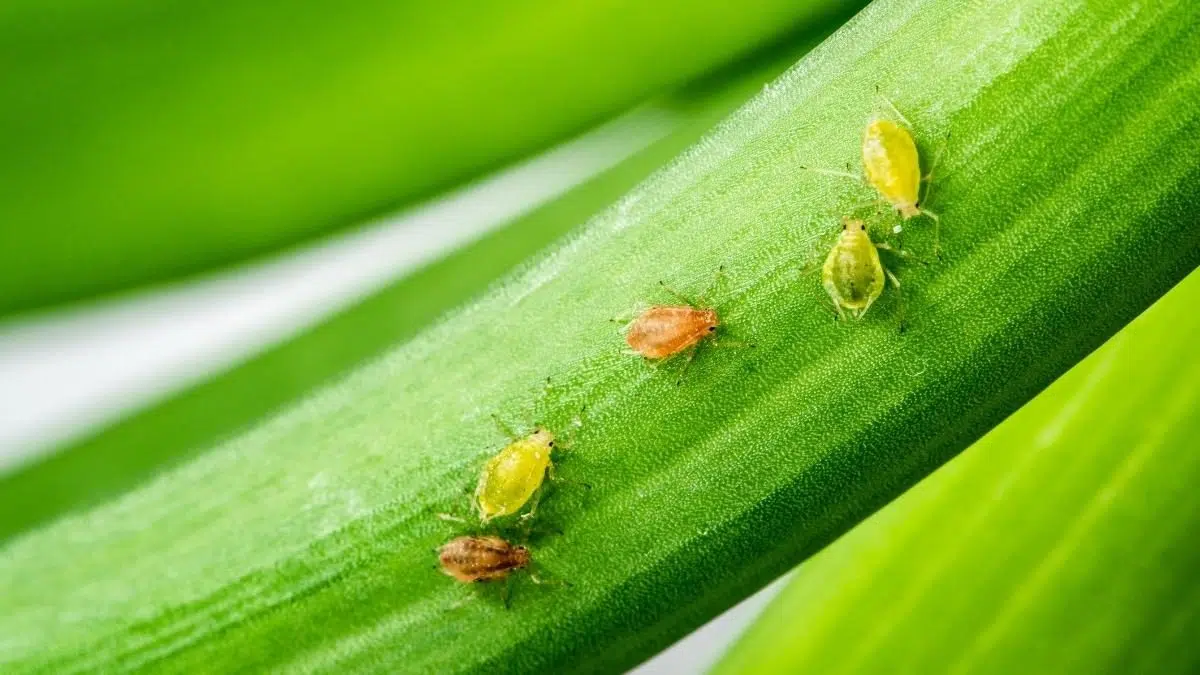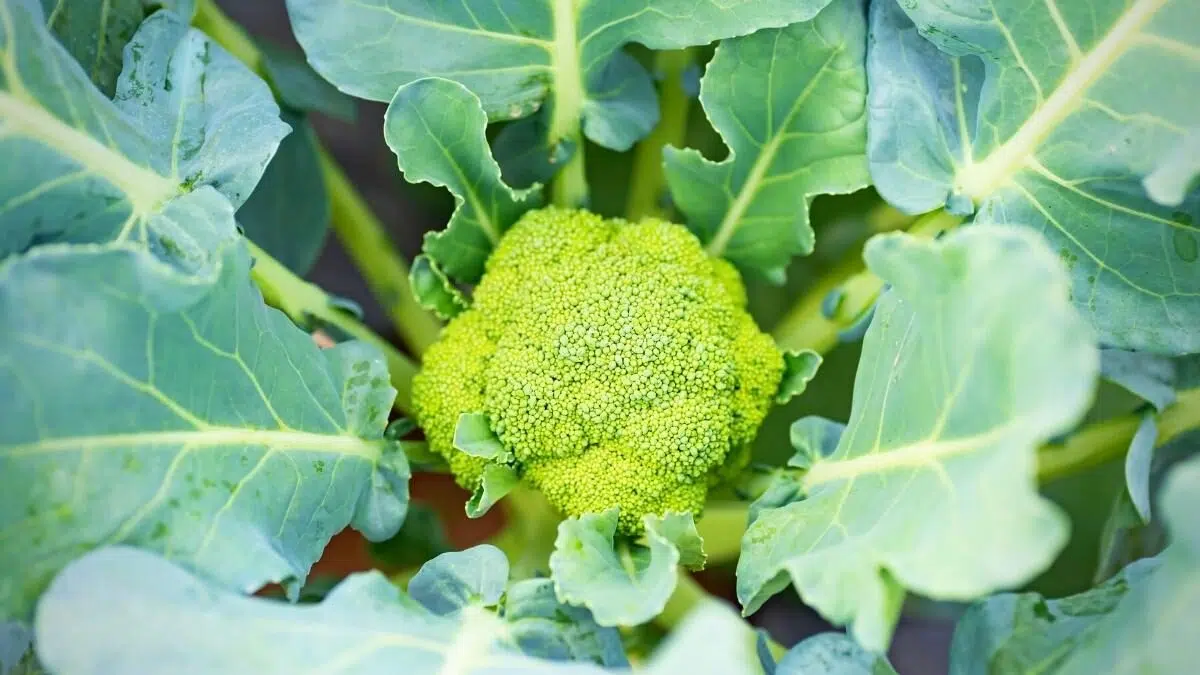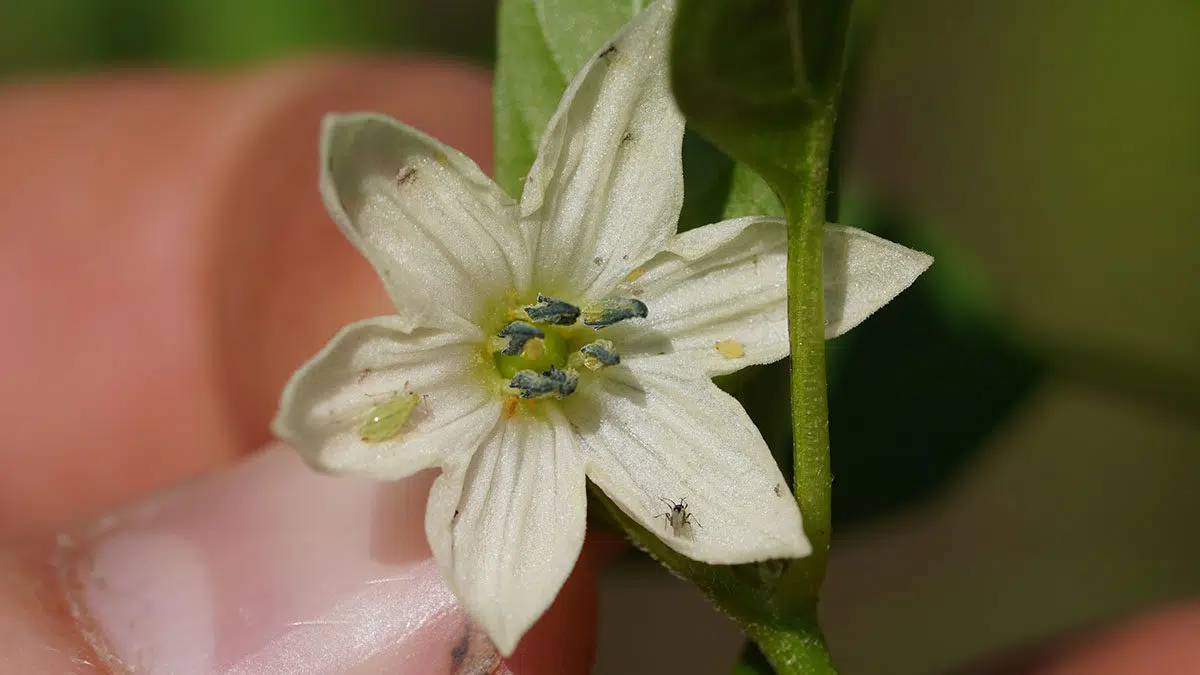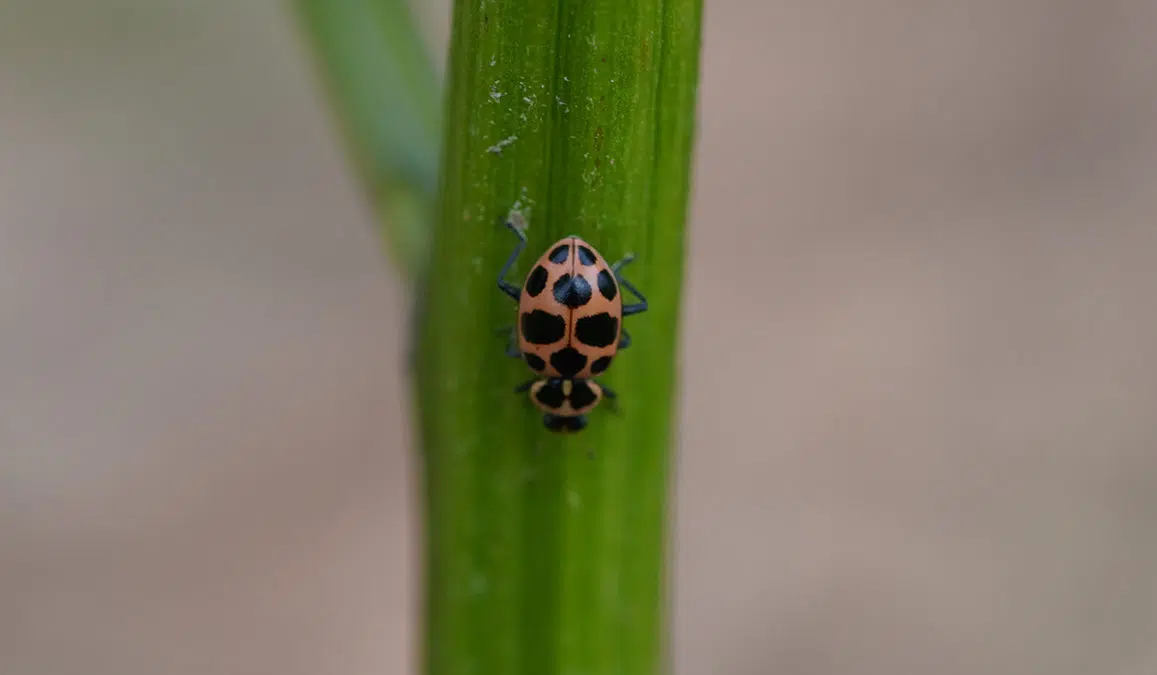When growing broccoli, there are some pests you need to keep in mind so they don’t take over your plants. Aphids are a big pest issue when growing broccoli. And they seem to come out of nowhere too. I call them the glitter of the garden because once there is one of them, they multiple like crazy are can be challenging to keep under control.
Unfortunately, broccoli leaves and stems are a common target for aphids. Aphids suck the sap and can cause serious damage to the plant, and often lead to smaller yields or the entire plant dying.
What are Aphids?

Aphids are small insects that feed on plant juices and more specifically, the sap of plants. They can be found on a wide variety of other plants, including tomatoes, peppers, and herbs aren’t safe either!
If you find them in your garden, it’s best to get rid of them as quickly as you can because they multiply FAST.
Aphid Infestation & Broccoli Plant Damage
Aphids are not something you want to find on your plants because of two reasons:
- They can transmit different fungal diseases, carrying them from one plant to another.
- They feed on the sap in leaves, which can stress out the plants enough to stunt growth.
They suck the sap and can cause brown or yellow of the broccoli leaves. Aphids can also transmit plant viruses like crown rot and powdery mildew. They leave behind a sticky substance on the infected plant.

How to Get Rid of Aphids on Broccoli
Since they are one of the most common broccoli pests let’s talk about how we can get rid of and start controlling aphids in the garden.
1. Squash Them With Your Hand
This is the most straightforward method if you catch an aphid infestation early.
If you only see a few aphids here and there, it’s best to just squash and remove the dead aphids. Since these soft-bodied insects and adult aphids reproduce really fast (in as little time), if we make the effort of going out in search of a remedy at the grocery store – and come back later on the next day- the colony might have doubled!
Aphids won’t bite you, so you can just squash them between your fingertips right on the leaves.

2. Spraying Aphids Off Your Plants
As the infestation gets to be more severe, you’re going to want to take more extreme measures. Luckily, you can spray them off the plant with a strong stream of water from a hose or watering wand.
Young plants have delicate leaves that won’t be able to handle a strong spray, so instead you can dip the entire leaf into a jar of room temperature water to remove the aphids.
3. Natural Sprays & Neem Oil
Natural sprays can help kill aphids and reduce the reoccurrence of aphid infestations for a little while.
Neem oil is one of my favorite aphid killing methods because it works quite well on many insects, aphids being one of them. It comes from the neem tree, and is organic and deemed safe for herbs and vegetables to consume.
Pure neem oil is an excellent way to help stop the aphid damage can do. It removes their ability to feed and eventually kills them off, giving your plants plenty of time for recovery!
4. Insecticidal Soap
You can purchase insecticidal soaps like this one that will help with getting rid of aphid colonies.
You can also make your own DIY soap with a few ingredients:
- Dish soap (natural, free of perfumes)
- Water
- Vegetable oil
- Spray bottle
Make sure you’re using a dish soap that doesn’t contain a lot of harmful chemicals – we are spraying this on your plants that you’ll eventually eat and those additives can also impact plant growth.
Add 1 teaspoon of soap and 1 teaspoon of oil, to a half-gallon of water and spray on the plants. Since most aphids are found on the bottom side of the leaves, start by spraying there.
The soapy water will suffocate the aphids and they will eventually fall off the plant.
5. Introduce Natural Predators & Beneficial Insects
You can attract the bugs and predators that feed on aphids. This method is quite natural, but it may not be as effective as using other methods like pesticides or insecticidal soap.
Natural predators to aphids include:
- Lady bugs/lady beetles
- Damsel bugs
- Small parasitic wasps
- Syrphid fly larva
Ladybugs eat aphids in their natural environment, and you can either buy huge colonies of these insects (yes, you can get them on Amazon!), or plant flowering plants that attract them to the area – see companion planting below.
How to Deter Aphids and Prevent the Damage
Broccoli needs a good amount of airflow to thrive so be sure not to crowd the plant with too many leaves. If you overlap them, garden pests like aphids will have an easy time moving between plants because there isn’t any space blocking their way!
1. Proper Spacing and Pruning of Your Broccoli and Other Brassicas
Making sure you are spacing your broccoli properly is super important.
If you plant them too close together or to other plants, you are going to reduce the amount of airflow that can pass between plants. You’re also overcrowding the plants enough that aphid populations (and other pests) can move from one to the next very easily.
Proper pruning of the plant is also essential for getting rid of excess branches and infected leaves that might be wilting or riddled with fungus.
2. Companion Planting
Companion planting is the practice of growing two or more plants together in order to help one another.
There are many benefits to companion planting, including reduced need for pesticides and increased yields from your garden. Some plants can help protect other crops from fungal diseases or produce chemicals that repel pests or attract beneficial aphid predators and parasites.
Some great broccoli companion plants are:
- Celery
- Lettuce
- Potatoes
- Shallots
- Rhubarb
- Rosemary
- Marigolds
These companions can help improve the health and growth of broccoli plants, by repelling pests like aphids and helping to prevent fungal diseases.
3. Attract Lady Bugs
Making your garden a nice home for ladybugs is a great way to prevent large aphid infestations.

Lady bugs are attracted to quite a few plants in the garden, including:
- Dandelion
- Cilantro
- Dill
- Parsley
- Tansy
- Marigolds
- Chives
- Calendula
- Fennel
No wonder seeing ladybugs around is considered so lucky!
4. Row Covers
Row covers can come in handy when trying to control aphids if you typically get large infestations in the outdoor growing season. This isn’t a perfect method but can help repel aphids by making it extremely hard for them to reach your plants.
Row covers can also be used to protect from as shade cloth to protect plants from heat and cold.
5. Check Plants Regularly
I like to check my plants every few days for signs of aphids. You can check the entire plant every morning when watering, or at least every few days.
This is super easy if you grow plants indoors and have quick access to it.
Keeping Aphids Away from Broccoli Plants
Broccoli is a staple in our household, and probably many others. Growing heads of broccoli isn’t super challenging, but if aphids start to creep in it can dampen the excitement of growing your own.
But, they can be managed pretty well if you’re regularly checking your plants and getting rid of them as you find them.


